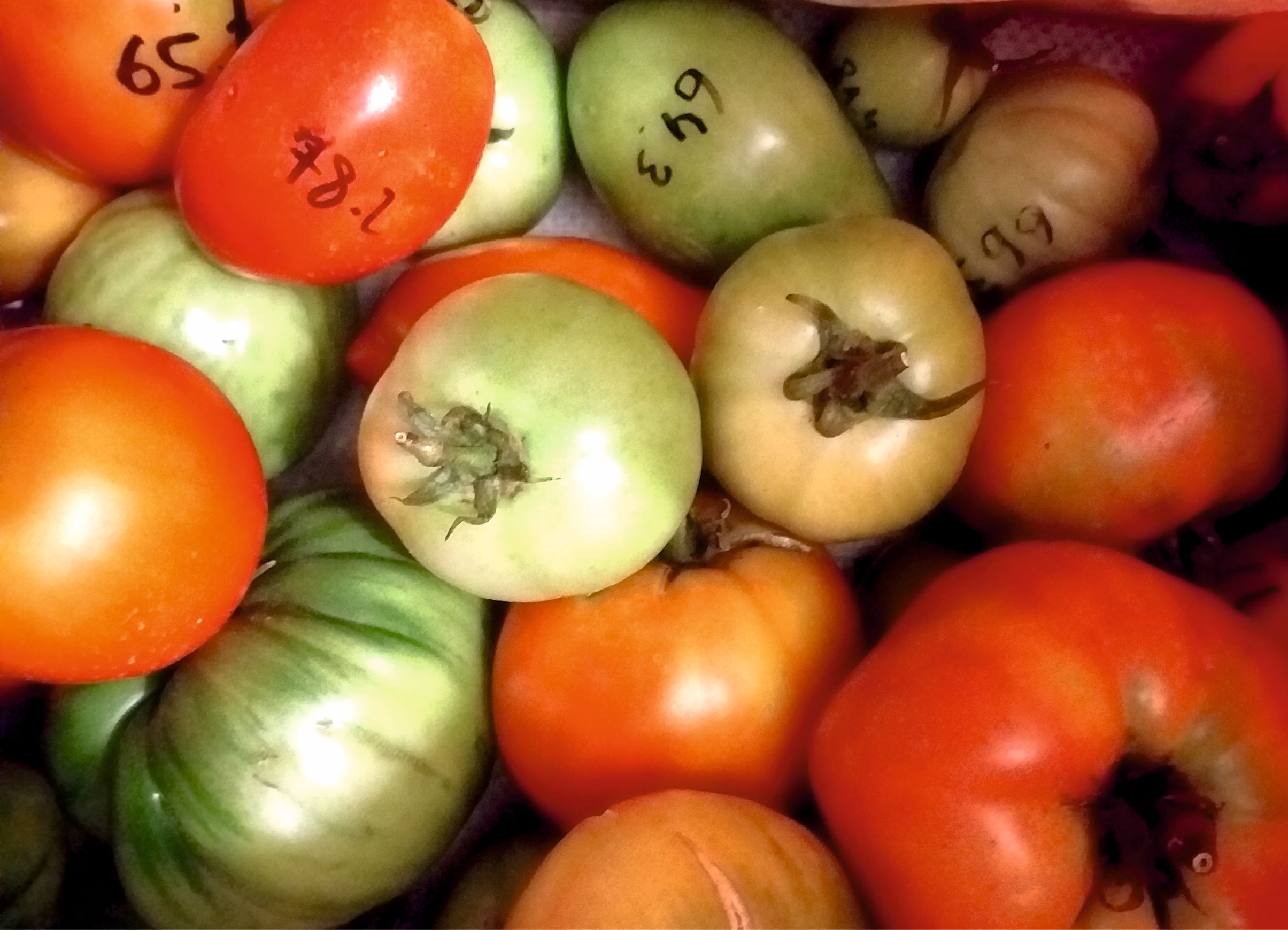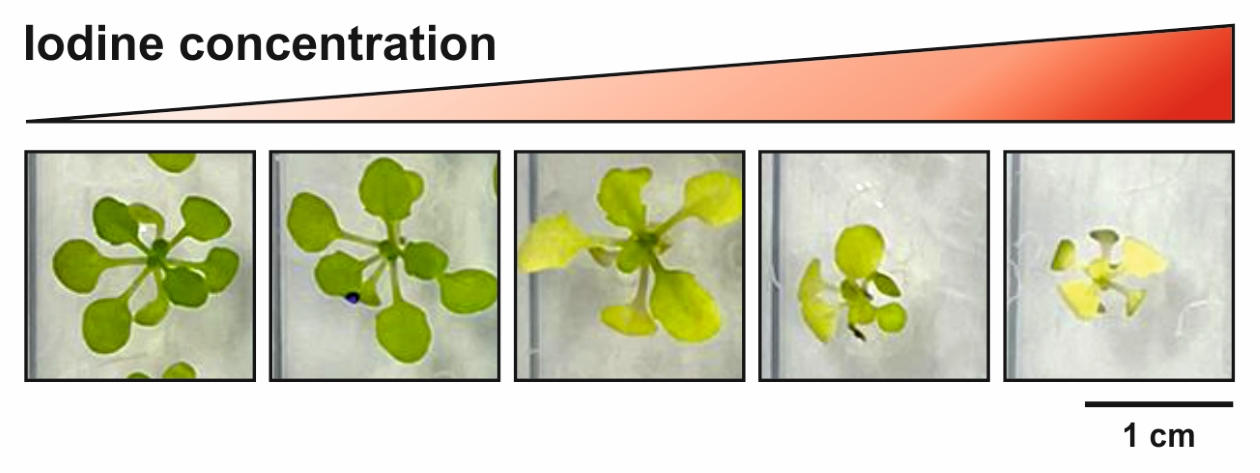
Improve iodine and other human micronutrient content in crops
The World is facing drastic, rapid, and unpredictable challenges. To set an example, in just the past few years we have faced a global pandemic, worsening climate conditions, an energetic crisis, war conflicts, and terrorism. Such conditions impose serious constrains on food security, including production, management, distribution, and affordability. To aggravate this, the World’s population keeps growing, demanding measures to ensure global food security that reflect not only matters of food production, but also its nutritional value. In this regard, nutrient quality is often neglected in favour of caloric products with low micronutrient content, commonly referred to as “empty foods”. This problem leads to a phenomenon known as hidden hunger, which is particularly problematic in developing countries and brings negative consequences to human health and quality of life. For this reason, the World Health Organization and other initiatives have been emphasizing the need for improved micronutrient content of foods, with special attention to iodine, iron, zinc, and vitamin A.
What to do to counteract micronutrient deficiency?
Smart and bold strategies are necessary, but they also need to be established in a sustainable way. The use of exogenous supplementation to the final food product, known as fortification, is not sustainable in the long term and implies additional practices during production and/or processing. Other popular approaches are based on biofortification strategies, such as exogenous supplementation of salts to the growth substrate or the use of intrinsically nutrient-enriched varieties. The latter is obviously preferable, but achieving this requires a deep knowledge of how different nutrients are regulated in living organisms. Regarding crop production, there are several critical issues to address. For instance, how can we potentiate nutrient absorption by crops without any negative side effects on plant yield, considering that many nutrients/elements are toxic in high doses.
Strategies to understand how nutrients are regulated in plants can broadly operate at two levels: advanced functional biology and exploitation of extant biodiversity. Functional biology concerns the studies that determine the function of a gene. Roughly speaking, a gene is defined as a sequence of DNA that has a biological function. Therefore, we intend to study genes and their differences between plant species that can contribute to plant biofortification and that will speed up the breeding of crops that can suppress many of these nutritional needs. This cutting-edge research often employs sophisticated methods such as next-generation sequencing, genome editing, and bioinformatic analyses. Additionally, the exploitation of natural biodiversity can bring a diversity of traits with different nutritional profiles. In previous works, we observed that the Portuguese tomato biodiversity collection, preserved at the Portuguese Plant Germplasm Bank (BPGV; INIAV-Braga), contains varieties enriched in certain micronutrients, such as zinc. Ours and others’ research findings clearly emphasize that the natural biodiversity of crops, such as tomato, is an incredible hotspot for new traits of interest that will ultimately help achieve food security and improved nutrition value.
Tomato collected in the field for micronutrient quantification. These tomato accessions are part of the BPGV collection.
The specific problem of iodine deficiency
Iodine is an essential element for human health and survival. As iodine cannot be produced by the human body, it must be consumed in the diet. Insufficient iodine intake results in various diseases (e.g. goitre), collectively designated as Iodine Deficiency Disorders (IDDs). In contrast to other micronutrients, iodine malnutrition affects both developing and developed countries.
A recent study, anchored in the EUthyroid project, established the first standardized map of iodine status between different European countries. Analysis of the urinary iodine concentration from 23 countries unequivocally revealed that iodine deficiency is prevalent in Europe. Indeed, some countries had low iodine levels for school children (e.g. Norway) or adults (e.g. Germany). The most shocking observation was that pregnant women, in most of the European countries, have below-recommended iodine intake. Considering that iodine is critical in early stages of human developmental, actions are immediately needed to improve iodine consumption in pregnant women. Portugal is no exception. Iodine deficiency has been reported since the historical case of endemic goitre in Oleiros (Castelo Branco district, Portugal) and is still present in several regions of the country, especially affecting children. Much more information about iodine around the world can be found on the Iodine Global Network.
High doses of iodine are deleterious to plant growth. Although iodine is a beneficial element for plants, when in excess it’s toxic.
Salt iodization programs have been implemented as a prophylactic measure to alleviate IDD-related problems. However, the problem persists and complementary measures are urgently needed. The use of iodine-(bio)fortified vegetables has proved to be effective in generating significantly increasing iodine intake and is becoming a popular approach. Curiously, and despite the potential use of iodine, knowledge about iodine uptake and regulation in plants is extremely scarce. Very recent research has been implemented to identify genes involved in iodine regulation to further increase iodine content. A specific gene, named Halide Methyltransferase (HMT), is involved in the release of iodine from the plant by volatilization. This is because iodine can also be toxic, so the plant has to expel iodine when in excess. In our group, we are trying to understand how conserved this strategy is in plants, and whether it is possible to switch it off thus increasing endogenous iodine levels. We need to understand how plants absorb and accumulate iodine because this knowledge is critical for the translation to worldwide relevant landraces. Therefore, tomato and other crops are being investigated for altered HMT (and other genes), with the objective of boosting iodine content in edible tissues.
Pedro Humberto Castro is a Plant Molecular Biologist. After finishing his BSc degree in Applied Biology (2007) and specializing in Plant Molecular Physiology (2008), PHC started his PhD studies (Univ. Minho, PT; Univ. Malaga, ES) to understand molecular mechanisms involved in the regulation of nutrient homeostasis and to enhance crop resilience to climate change. After finishing his PhD degree (2013), PHC was an invited assistant professor at the Univ. Minho. In 2015, PHC moved to Univ. Copenhagen (DK), where he was involved in ground-breaking discoveries that unravelled how plants perceive and regulate the micronutrient zinc. Presently, PHC is a researcher at CIBIO-InBIO/BIOPOLIS, Univ. Porto (PT), where he studies plant biofortification mechanisms for micronutrients and beneficial elements (i.e. iodine) and genetic strategies to counteract environmental stress conditions.



0 Comments